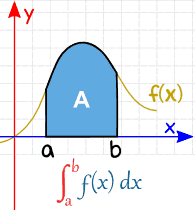Integrate the function: \(\frac{1}{x^{\frac{1}{2}}+x^{\frac{1}{3}}}\) [Hint:\(\frac{1}{x^{\frac{1}{2}}+x^{\frac{1}{3}}}\)=\(\frac{1}{x^{\frac{1}{3}(1+x^{\frac{1}{6}})}}\)Put x=t6]
Solution and Explanation
\(\frac{1}{x^{\frac{1}{2}}+x^{\frac{1}{3}}}\)=\(\frac{1}{x^{\frac{1}{3}(1+x^{\frac{1}{6}})}}\)
Let x=t6⇒dx=6t5dt
∴\(\int \frac{1}{x^{\frac{1}{2}}+x^{\frac{1}{3}}}dx=\frac{1}{x^{\frac{1}{3}(1+x^{\frac{1}{6}})}}dx\)
=∫6t5/t2(1+t)dt
=6∫\(\frac{t^3}{1+t}dt\)
Top Questions on integral
- Evaluate the integral: \[ \int \frac{\sin(2x)}{\sin(x)} \, dx \]
- Find the value of the integral: \[ \int_0^\pi \sin^2(x) \, dx. \]
- Evaluate the integral: $$ \int_0^{\pi/4} \frac{\ln(1 + \tan x)}{\cos x \sin x} \, dx $$
- Evaluate the integral \( \int_0^1 \frac{\ln(1 + x)}{1 + x^2} \, dx \)
- Let $ f(x) $ be a positive function and $I_1 = \int_{-\frac{1}{2}}^1 2x \, f\left(2x(1-2x)\right) dx$ and $I_2 = \int_{-1}^2 f\left(x(1-x)\right) dx.$ Then the value of $\frac{I_2}{I_1}$ is equal to ____
Questions Asked in CBSE CLASS XII exam
- \[ \int \frac{x + 5}{(x + 6)^2} e^x \, dx \] is equal to:
- CBSE CLASS XII - 2025
- Application of Integrals
- The diagonals of a parallelogram are given by \( \mathbf{a} = 2 \hat{i} - \hat{j} + \hat{k} \) and \( \mathbf{b} = \hat{i} + 3 \hat{j} - \hat{k}\) . Find the area of the parallelogram.
- If \( \int \frac{1}{2x^2} \, dx = k \cdot 2x + C \), then \( k \) is equal to:
- CBSE CLASS XII - 2025
- Integration
- A rectangular glass slab ABCD (refractive index 1.5) is surrounded by a transparent liquid (refractive index 1.25) as shown in the figure. A ray of light is incident on face AB at an angle \(i\) such that it is refracted out grazing the face AD. Find the value of angle \(i\).

- CBSE CLASS XII - 2025
- Refraction
- If \( \mathbf{a} \) and \( \mathbf{b} \) are position vectors of two points \( P \) and \( Q \) respectively, then find the position vector of a point \( R \) in \( QP \) produced such that \[ QR = \frac{3}{2} QP. \]
Concepts Used:
Definite Integral
Definite integral is an operation on functions which approximates the sum of the values (of the function) weighted by the length (or measure) of the intervals for which the function takes that value.
Definite integrals - Important Formulae Handbook
A real valued function being evaluated (integrated) over the closed interval [a, b] is written as :
\(\int_{a}^{b}f(x)dx\)
Definite integrals have a lot of applications. Its main application is that it is used to find out the area under the curve of a function, as shown below:
